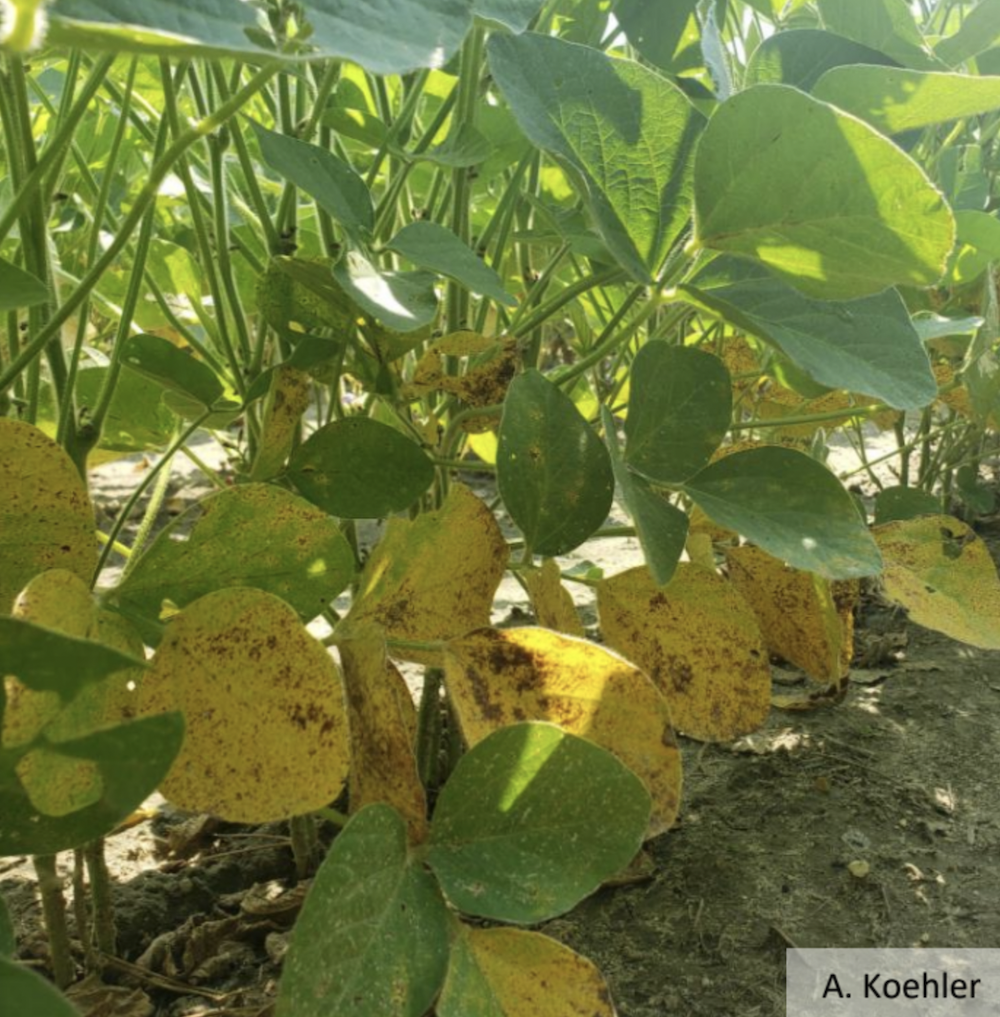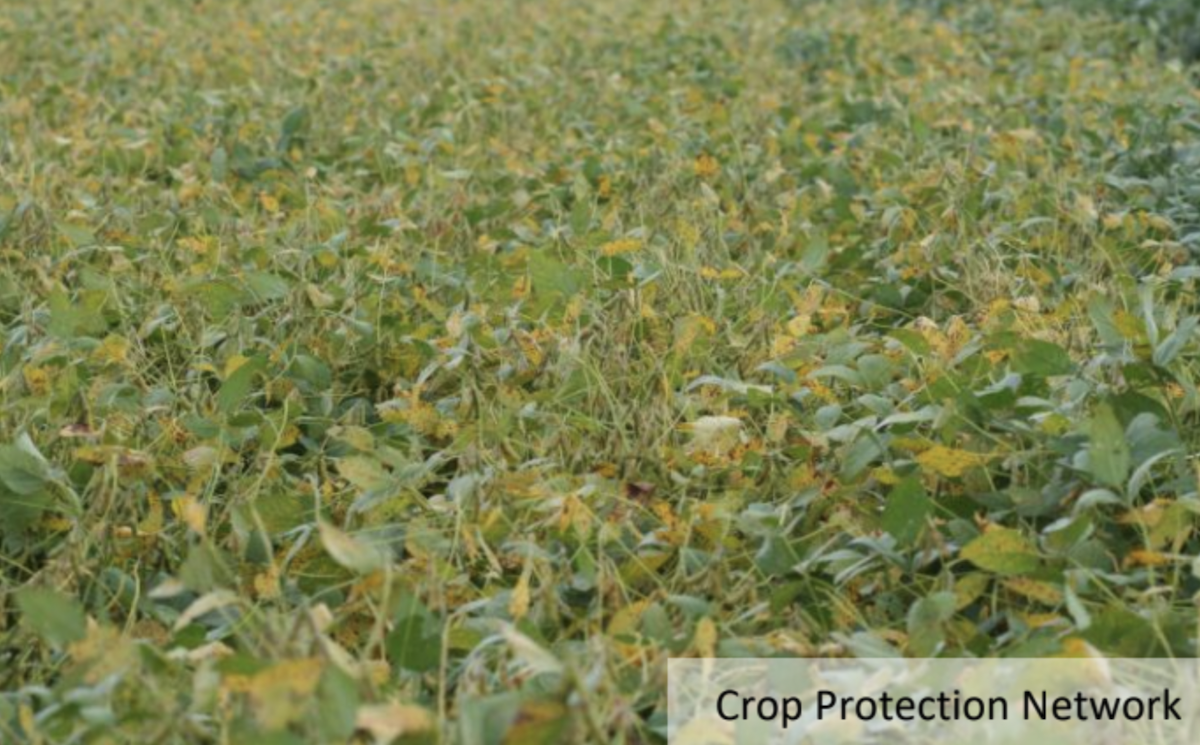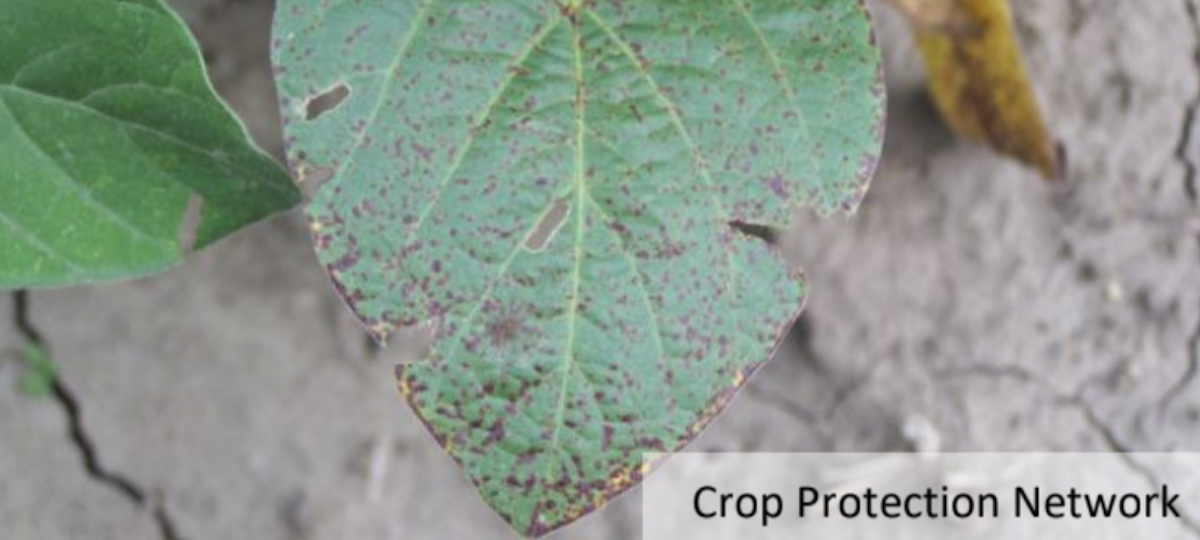
Fact Sheets And Publications
Septoria Brown Spot in Soybean
Pest Background
- One of the most common foliar diseases of soybeans.
- Caused by the fungus Septoria glycines.
- Present in most fields at some level every year.
- Disease is favored by high rainfall and canopy moisture.
- Hot, dry conditions will keep symptoms in the lower canopy.
Identification
- Symptoms begin as small brown spots that can have a yellow halo around them, as spots coalesce the leaf may turn yellow (Figs 1 and 3).
- Infected leaves may drop prematurely (Fig 2).
- If symptoms remain in the lower canopy, yield is not usually impacted.

Fig 1: Septoria brown spot in the lower canopy

Fig 2: Leaf drop due to upper canopy infection

Fig 3: Early symptoms of septoria brown spot
Management
- The pathogen overwinters on infected leaf and stem debris.
- Rotation to non-host crops like corn and small grains can reduce pathogen survival.
- Susceptibility varies across soybean varieties, but since there are no known sources of resistance, ratings for this disease are not often provided.
- If disease is rapidly moving up the canopy, fungicides can be applied according to the label at the R3 to R5 growth stages to slow disease spread into the middle
References
Crop Protection Network (2022, Jan 25).
Septoria Brown Spot of Soybean. Retrieved
from:https://cropprotectionnetwork.org/encycl
opedia/septoria-brown-spot-of-soybean
Authors: Madeline Henrickson and Dr. Alyssa Koehler
UD Cooperative Extension
This institution is an equal opportunity provider.
In accordance with Federal law and U.S. Department of Agriculture policy, Cooperative Extension is prohibited from discriminating on the basis of race, color, national origin, sex, age, or disability.
